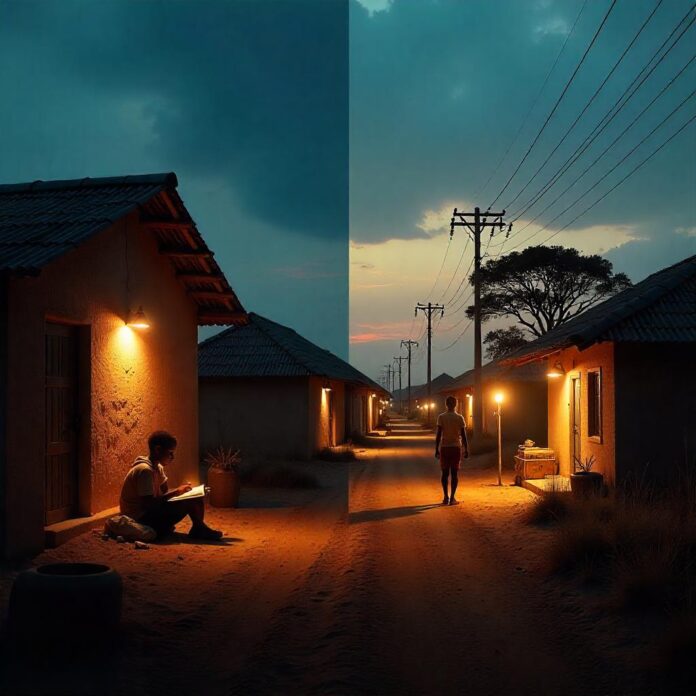The Human Face of Energy Poverty
Let’s cut through the abstract numbers. That $32.8 billion figure represents real lives. Right now, as you read this, 759 million people prepare for another night without light. Students in rural Nigeria squint over textbooks by kerosene lamps, inhaling toxic fumes that cause 4.3 million premature deaths annually. Clinics lose vaccines when diesel generators fail. Entrepreneurs shutter workshops by sunset. This isn’t just infrastructure failure—it’s systemic exclusion.
Nigeria’s July 2025 Mission 300 summit wasn’t another bureaucratic gesture. It was a survival pact: Universal electricity access by 2030 via a detailed $32.8 billion roadmap. Why does this matter globally? Because 85% of the world’s unelectrified population lives in sub-Saharan Africa, and Nigeria’s success or failure will set the precedent. The cost of inaction? Generations locked in poverty. The solution? We’ll dissect it section by section.
The $32.8bn Breakdown: Nigeria’s Funding Blueprint
Private Capital ($15.5 billion | 47%)
This isn’t charity. Investors expect returns, and Nigeria’s reforms make that possible. The Presidential Metering Initiative tackles revenue leakage by installing 10 million smart meters by 2027, reducing losses from 45% to 18%. Brookfield’s $2.8 billion acquisition of Duke Energy’s renewables portfolio proves African energy projects can attract top-tier capital—if risks are managed. Nigeria’s playbook: Grid Expansion: $6.1 billion for transmission lines connecting 5 million new users. Renewable Mini-Grids: $4.3 billion for 12,000 solar-hybrid systems serving remote communities. Asset Monetization: Selling stakes in generation companies to fund distribution upgrades.
Government Funds ($12.3 billion | 38%)
The hardest pill to swallow: Clearing $9.4 billion in legacy debts owed to generators. Without this, private capital flees. Tariff reforms are equally critical: transitioning to cost-reflective pricing while protecting low-income households via direct subsidies. The National Electricity Regulatory Commission now mandates utilities to prove fair pricing through public hearings—a transparency milestone.
Development Finance ($5 billion | 15%)
The World Bank’s DISREP program injects $2.3 billion into decentralized renewables, with repayment tied to performance. AfDB’s Mission 300 facility offers concessional loans at 2% interest over 20 years. But let’s be honest: this is a bridge, not the foundation. As the IEA notes, Every dollar of public finance must mobilize three private dollars.
The Global Context: Energy Finance Gaps & Inequalities
The injustice is staggering. Sub-Saharan Africa houses 566 million unelectrified people—85% of the global total—yet receives only 17% of energy access funding. Clean cooking? Even worse. While $4.4 billion/year is needed to end hazardous wood and charcoal use, commitments barely scratch $30 million. The result: 800,000 children under five die annually from indoor air pollution.
Meanwhile, fossil fuels distort priorities. G20 nations channeled $6.8 billion into new coal plants in 2023–2024—triple the 2022 figure. Renewables get lip service; coal gets checks. This isn’t just hypocrisy; it’s fiscal self-sabotage. Solar now delivers power at $0.042/kWh in Nigeria versus $0.15/kWh for diesel. Every dollar sunk into coal deepens the access gap.
Why Private Capital is Key: Opportunities & Challenges
Investors aren’t villains. They need bankable projects. Nigeria’s reforms target four deal-breakers: Liquidity Assurance: A Central Bank-backed payment assurance facility guarantees generators get paid. Currency Hedges: Dollar-indexed returns for foreign investors. De-risking: World Bank partial risk guarantees cover mini-grid developer revenues. Regulatory Certainty: NERC’s new 10-year tariff framework locks in terms.
Success exists: Bboxx Capital secured $100 million from institutional investors for pay-as-you-go solar systems in Rwanda and DRC. Stonepeak’s $3 billion investment in Dominion Energy’s offshore wind shows non-controlling equity can work. But grid reliability remains Nigeria’s Achilles’ heel. Until transmission losses drop below 10%, big capital stays wary.
Bridging the Gap: 5 Innovative Strategies
Decentralized Renewables: Solar mini-grids now power Nigerian villages at $0.28/kWh—50% cheaper than grid extension. Target: 40% of new connections. Blended Finance: AfDB’s $500 million facility absorbs first-loss risk, attracting pension funds. AI-Driven Efficiency: Georgia Power cut outages by 30% using predictive grid analytics—a model for Nigeria’s Discos. Tiered Access: Not everyone needs a refrigerator day one: Tier 1: Solar lantern ($50) → Light + phone charging Tier 3: 200W system ($300) → Fan + TV Tier 5: Full grid ($2,500) → Industrial use Subsidy Swaps: Redirecting $1.3 trillion/year in global fossil fuel subsidies to renewables could end energy poverty by 2030.
A Call to Action: Powering Our Collective Future
To Governments: Fast-track permitting. Nigeria’s 24-month approval process for solar farms must shrink to 6 months. Copy Botswana’s one-stop shop for renewable licenses. To Investors: Enter via infrastructure funds. Basalt’s acquisition of AEP OnSite shows how to scale distributed energy. To Communities: Demand inclusive planning. The Energy Compact model lets villages prioritize projects—clinics first, then schools. To You: Verify utility commitments. Platforms like SEforALL’s Energy Finance Tracker expose empty promises.
The Light Ahead
That $32.8 billion isn’t a liability—it’s an investment with a 23% annual ROI from productivity gains. Nigeria’s blueprint proves universal access is feasible: private capital financing grids, public funds securing reforms, communities driving priorities. The darkness suffocating millions isn’t inevitable. It’s a policy choice. As transmission towers rise over Niger Delta villages and solar arrays hum in Bauchi markets, we’re witnessing more than electrons flowing. We’re seeing dignity restored. The 2030 goal remains ambitious, but for the first time, it’s operational—not aspirational.


